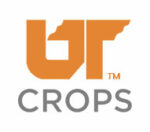LINKS
Bt Corn
Bt corn contains the gene(s) from a common soil bacterium, Bacillus thuringiensis, which causes plants to produce insecticidal proteins. Bt corns are commercially available that produce a toxin which make them resistant to caterpillar pests (e.g., YieldGard Corn Borer ®, Herculex I®). Bt corn provides excellent control of southwestern and European corn borer. In areas where cotton is also grown, only 50% of acreage on any farm can be planted to Bt corn. This restriction is part of a refuge requirement to manage resistance. Corn varieties producing two or more Bt traits for controlling corn borers have been recentely registered (e.g., VT Double Pro®, VT Triple Pro®, SmartStax®, Agrisure Viptera®). A reduced refuge of non-Bt corn is required for these newer technologies, and they also provide improved control of other caterpillar pests (e.g., corn earworm and fall armyworm).
The following websites provides detailed information about refuge requirements in corn.
Bt corns that express a toxin(s) for control of corn rootworms are also commercially available (e.g., YieldGard Rootworm®, Herculex RW®). These Bt technologies help to reduce yield loss resulting from infestations of northern and western corn rootworms. They have little effect on southern corn rootworm. Northern and western corn rootworm infestations in Tennessee are uncommon, and there is limited data about the economic benefits of using rootworm resistant corn in Tennessee. A refuge of non-Bt corn is also required when planting vareities with Bt rootworm protection.
YieldGard VT Triple®, Herculex Xtra (XX)®, YieldGard VT Triple Pro®, SmartStax® and Agrisure Viptera 3111® contain Bt traits for control of both corn borers and western corn rootworm. A more complete list of available corn biotechnology traits, including efficacy ratings and refgue requirements, is available at the the following link: Corn Biotechnology Traits.







